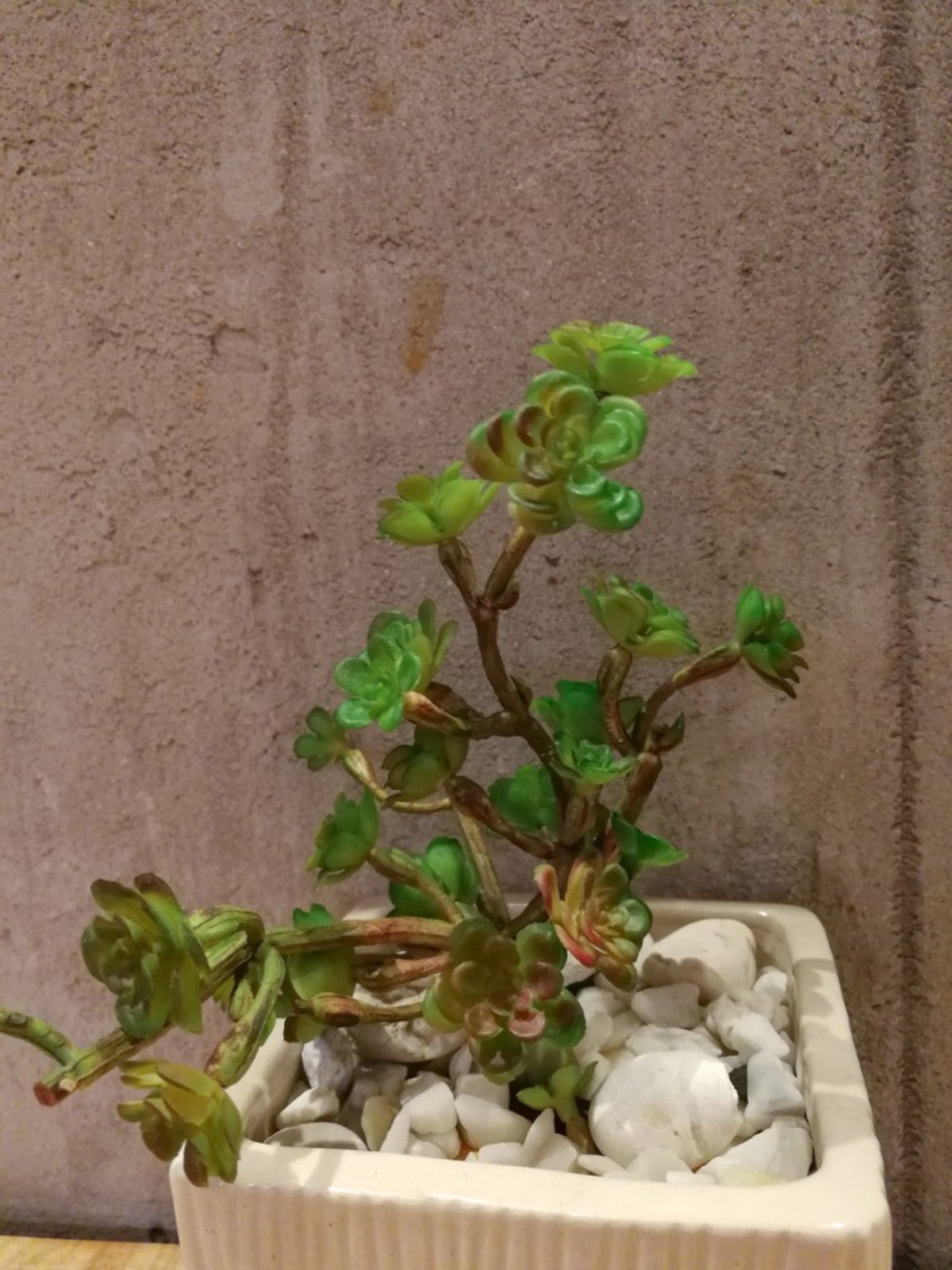Growing Potted Tree Stonecrop: Sedum Frutescens And Sedum Dendroideum Care


If you’re looking for a low care succulent to bring inside for the winter and locate on the floor, consider choosing a Sedum tree. Well-known succulent trees, “Sedum Frutescens” and “Sedum Dendroideum” are actually small succulent shrubs. These are commonly called Tree Stonecrop succulents, False Hens and Chicks and Joshua Tree. These specimens are native to Mexico but are reportedly naturalized in California and likely other states in the US.
Sedum Dendroideum
These can grow to three feet (.9 m.) in height in the right container and spread to three to four feet (.9 to 1.2 m.) across. While many Stonecrop varieties are hardy in cold temperatures, the Dendroideum and Frutescens need to avoid temperatures that drop to frost (42°F or 0° C). Otherwise, you can grow these outside in the full sun with filtered sun being preferred. Plant them in areas with poor or sandy soil where nothing else tends to do well.
Grow Dendroideum and Frutescens outside year-round in Hardiness Zones 10 and 11. Lower zones should plan indoor winter accommodations.
As with other sedum types, the Dendroideum is forgiving of conditions that aren’t exactly part of their requirements, and will most likely thrive in any appropriate location. The plant is evergreen and blooms in late winter.
Plant these in gritty soil amended with pumice or coarse sand. Water in, then allow this drought-tolerant specimen to show you when it needs water. Wrinkled leaves indicate it needs water, but full leaves let you know it has plenty of water stored in them for the future. As you know, too much water is the leading cause of root rot and death in succulent plants.
Sedum Frutescens
An unusual plant, this plant is sometimes considered rare, especially when grown as a houseplant. It is also evergreen and drought tolerant and doesn’t tolerate frost. Conditions and moving times similar to the dendrobium are appropriate for the Joshua tree also.
This plant has arborescent stems, and is often used for bonsai. Plant in a container and bring indoors for an interesting potted tree succulent for the winter.
Sign up for the Gardening Know How newsletter today and receive a free copy of our e-book "How to Grow Delicious Tomatoes".
Place both in filtered light to full sun and avoid watering while you have them inside. Many sedum types only need watering once a month or less in winter. Both bloom in late winter, so water once as blooms form. You may also add a light round of liquid fertilizer to make blooms last longer. This is the only time you should fertilize sedum succulents.
With tree sedums growing in the garden, plan ahead for when it’s time to bring them inside for the winter. Plant them in decorative pots that will work with the décor of your indoors so you don’t need to repot before bringing them inside.
Don’t confuse Yucca brevifolia with Sedum Frutescens, as it is also sometimes called Joshua tree. This is a succulent and is the largest of the Yucca species. This plant sometimes reaches more than 30 feet (9 m.) in height.

Becca Badgett was a regular contributor to Gardening Know How for ten years. Co-author of the book How to Grow an EMERGENCY Garden, Becca specializes in succulent and cactus gardening.